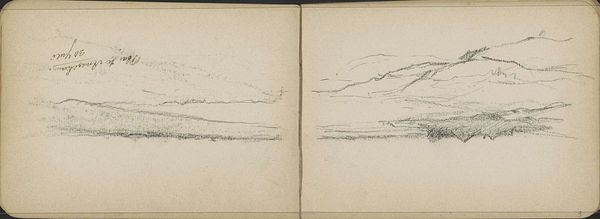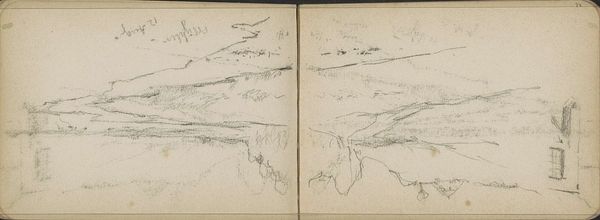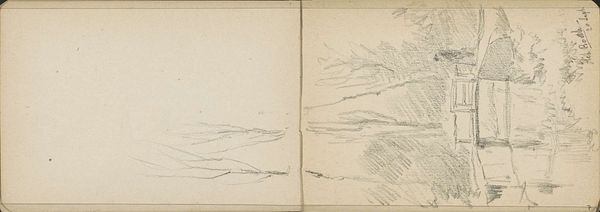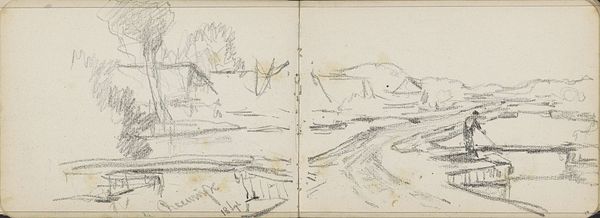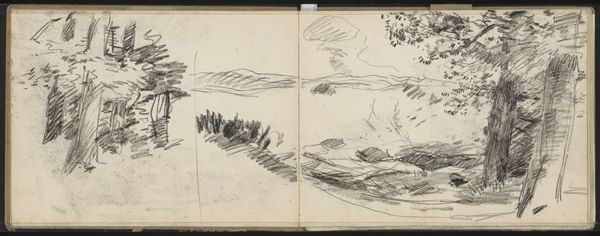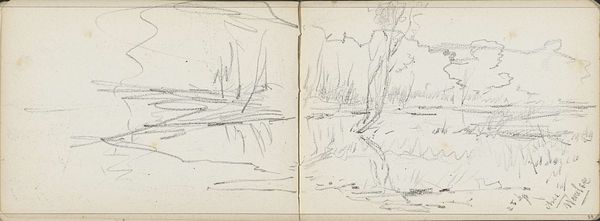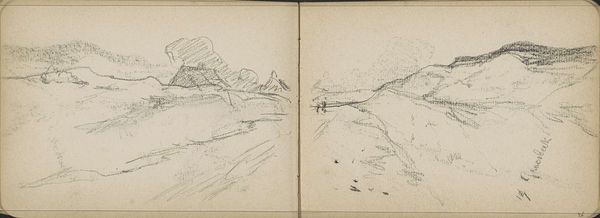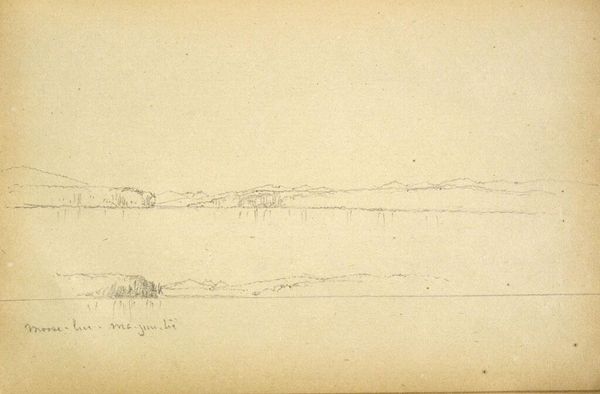
Dimensions: height 113 mm, width 159 mm
Copyright: Rijks Museum: Open Domain
Curator: This is "Maas bij Cuijk" by Willem Cornelis Rip, likely created between 1896 and 1898. It's a pencil drawing showcasing an impressionistic landscape. Editor: It's so sparse, almost ghostly. The lines are incredibly delicate, suggesting a fleeting moment captured quickly. It feels unfinished, raw. Curator: Precisely. As a pencil drawing, its materiality speaks volumes. The portability of the medium suggests a work created en plein air, rapidly documenting a scene as light shifted. Think about the artist situated by the riverbank, perhaps sketching for later studio work. The accessibility of pencil also democratizes the art-making process itself. Editor: And that speaks to its social context, doesn't it? The accessibility impacts who can become an artist, and who gets to portray the landscape. Consider the institutions exhibiting works like these and who is welcomed into those spaces. Were similar drawings considered studies or finished works, and how would their market value reflect these views? Curator: It’s interesting to consider Rip’s intention. The thinness of the lines might suggest a preliminary sketch for a painting. And it seems that, stylistically, Rip seems to play with realism versus impressionism as opposed to the flat style used to depict landscape, like a tourist might create a memento or keepsake, using locally accessible methods, rather than high art. Editor: The location plays a critical role. The Maas River was vital for trade and transport; its depiction connects art to the socio-economic fabric. And the presence of what looks like a church steeple places the landscape in relation to the dominant structures and belief systems of the period. Its display, even today, encourages us to consider this rural scene’s place in national identity narratives. Curator: I appreciate how this small drawing captures the essence of the landscape and implies a deeper cultural connection. It highlights how even everyday materials can reveal much about their context. Editor: It urges me to reflect on whose landscapes are valued and preserved and the historical systems that influence such aesthetic and monetary value assignments.
Comments
No comments
Be the first to comment and join the conversation on the ultimate creative platform.
